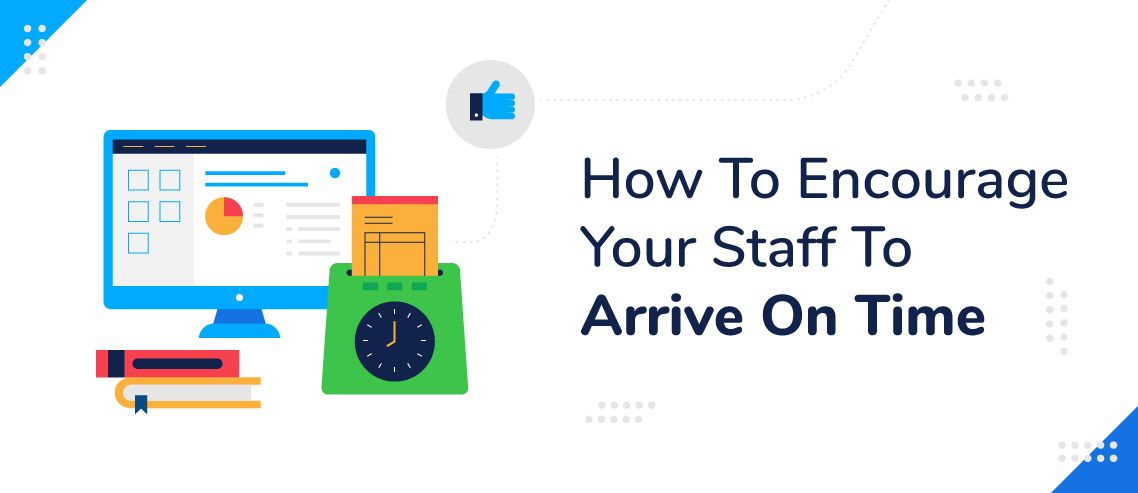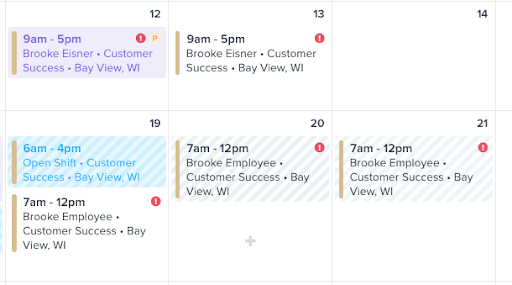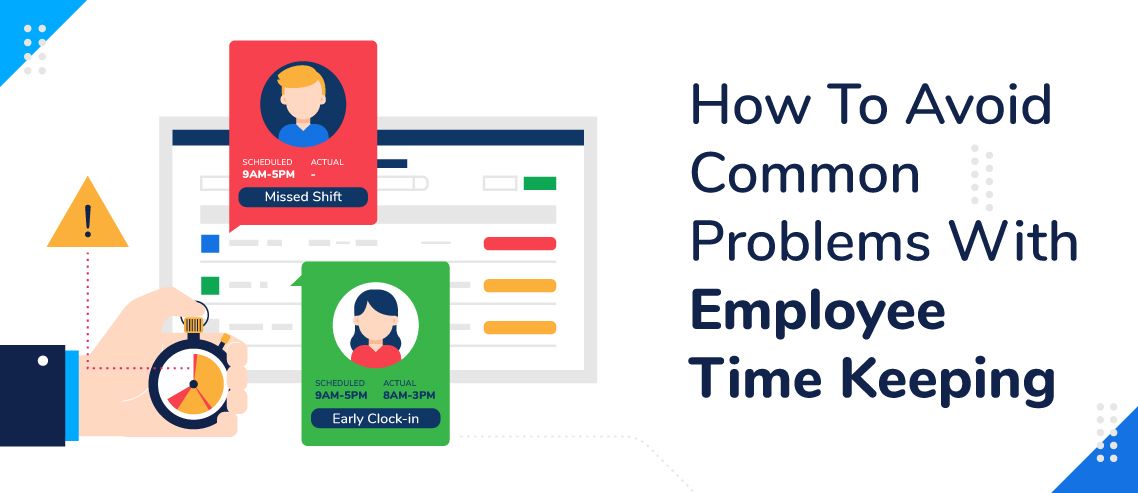How To Encourage Your Staff To Arrive On Time

There is nothing more frustrating to the business owner or manager than an employee who is consistently late for work.
While sometimes it’s unavoidable, being habitually late requires a steady hand and intervention. You certainly don’t want tardiness to become a habit.
Chronically late employees disrupt the balance of your business. It’s not fair to their fellow co-workers, and it can cause huge problems with the flow of your workday.
Tardiness is an incredibly common problem in the modern day workforce, but one that must be stopped before it costs your business money.
Let’s look at how to encourage your staff to arrive on time.
1. Find Out What Inspires Them
One of the best ways to encourage your staff to arrive on time is to find out what motivates or inspires them. In other words, what do they care about?
You’ll find that each of your staff members may be motivated by something different. Take a look at some common motivations:
• The paycheck
• Social part of work and enjoying adult company
• The bonus
• Praise
• Knowing they did a job well
• Climbing the ladder or a promotion
These are just a few of the common motivations you’ll find among your staff. How do you figure it out? The old-fashioned way – just ask them.
Once you have it figured out, it’s your job to increase their motivation.
You’ve taken the first step towards this by showing them you care enough to learn what drives them. You can even ask them what would motivate them to come to work on time. If it’s something you feel you can provide, by all means do it.
2. Increase Morale
It’s true that employees who hate their job are definite underperformers.
For your employee who is chronically late, this is a good place to look when searching for the cause of his tardiness.
When it comes to an employee with low morale, before you scold him for being late, find out how he feels about his job.
Perhaps it’s something as simple as his work area is dark and depressing. Or, it might be that he wants more responsibilities, or he is bored at work. Or, you might learn that something personal is affecting his work.
When employee morale is low, the last thing your staff member cares about is showing up to work on time.
Try and assist your employee the best you can.
Dark office? Bring in some lighting and some plants, or give him a new space altogether.
Bored at his job? Give him some new goals and tasks to accomplish.
There are things you can do to improve morale, and in turn, you’ll find he starts showing up on time to work.
3. Embrace Technology
There’s an abundance of tools available that can make employees and employers jobs a lot easier. Gone are the days of having to call down a list of staff to see who can work next week’s schedule. No shows should be a thing of the past. So wouldn’t it be great if you could share your schedule from anywhere via a mobile app?
ZoomShift’s work schedule app puts you in total control of employee timesheets. Reduce no-shows and keep everyone in the loop with 24-7 access to their schedules.

With ZoomShift your employees get instant notification when the schedule is assigned. and the mobile app shows their upcoming schedule. ZoomShift also has a setting for “Shift reminder notifications“. Your employees get a notification on email and mobile app once a new schedule is pushed live. Ensure your employees never miss a schedule and are always on time.

In case your employee isn’t available for the assigned shift, they can create a “Shift Cover Request.” Employees can assign the shift cover to fellow team members or can send it to the manager for allocation.
As a business owner or manager, you can take the communication to the next level with ZoomShift’s intricate and straightforward notification system. Quickly notify your team when the schedule’s published, shift cover requests pop up, or when time off requests is approved.
Oh last but not least, ZoomShift offers a free 14 day trial with no credit card required. What are you waiting for?
4. Discipline is Okay
When you have an employee who is just plain disrespectful and doesn’t care about showing up on time, don’t be afraid to use discipline.
If you created a policy for tardiness and steps for discipline, you can and should use them especially if you exhausted your soft tactics. If your employee is late without a legitimate reason on a continual basis, discipline is necessary.
Discipline should be done with the tardy employee and not your entire staff.
For example, if your staff member is always late, and you’ve tried everything, you might follow steps that look like this:
• Issue a verbal warning.
• Issue a written warning.
• If things don’t change, write him up and put the note in his file.
• If things still don’t change, dock his pay.
• If things still don’t change, delete his bonus.
• As a last resort, well, it’s time to fire him.
Don’t feel bad if nothing works, and you’ve used every tactic in your discipline policy. If this is the case, it’s time to let the employee go, and it’s okay. You can’t afford to have one staff member bringing the entire team down.
5. Reward Timeliness
If you talk to your employee and discuss his chronic tardiness, and he makes an effort to change, don’t forget to reward him with your praise.
Acknowledge his improved timeliness. Let him know you appreciate his hard work.
After all, a few kind words just might be the catalyst he needs to keep moving forward – on time.

Final Thoughts
An old French proverb says, “People count up the faults of those who keep them waiting.”
For most employers and employees that proverb holds true. When employees are chronically late, their managers and even their fellow co-workers begin a mental tally of the late employee’s other faults.
This isn’t good for anyone.
Your company must develop a tardiness policy that works for your company culture. Write it down and set it in motion. The most important part of your tardiness policy is action. When someone breaks the rules, there must be consequences.
If not, your entire staff may start to bend the rules, and you’ll find no one present in your business when the work needs to get done.
Be sure and address any problems head on so they don’t get out of hand.
Are you ready to leverage technology to manage your team’s schedule through the power of ZoomShift? Smart business owners are freeing up their time by using employee scheduling and time-clock software.
JD enjoys teaching people how to use ZoomShift to save time spent on scheduling. He’s curious, likes learning new things everyday and playing the guitar (although it’s a work in progress).



